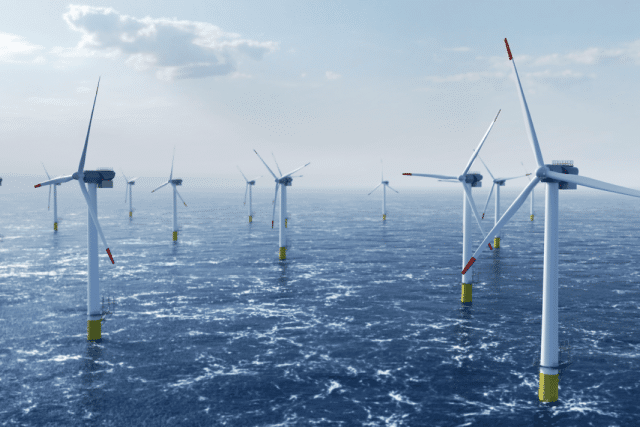New survey and subsurface techniques can help lower the cost of materials, fabrication, transportation and installation, argue Sean Goodman and Matt Grove, Regional Segment Managers at Seequent.
This year, there’s been a growing sense that the wind industry has moved into a new and less certain era, economically and politically. Companies are easing back on new projects as cost inflation worsens, and the long-term fallout from the Covid pandemic and recent energy crisis continue to take a toll, even now.
Meanwhile, contracts locked into government-set, low electricity prices are looking ever more unviable to boards across the world, at the same time as grants and tax breaks are fading.
But at Seequent, we believe the industry still has significant fair winds at its back, and that new technologies and solutions have the potential to help address the cost and inflationary issues troubling the sector. We’ll explore those later.
Increased costs mean increased caution
Organisations are taking unexpected, and in some cases unprecedented, decisions in the face of these factors, perhaps nowhere more than the UK. The decision of Swedish offshore giant Vattenfall to halt its 1.4GW Norfolk Boreas farm in the North Sea – won only last year – stunned the industry and dealt a harsh blow to the country’s green ambitions.
Just weeks earlier, those aspirations had already received an embarrassing dent when the government’s auction of new offshore wind contracts was met with a deafening silence. Not one offshore wind contract was picked up, blamed by industry insiders on the £44 per MWh price floor set for the auction. (And set against the backdrop of an incoming UK windfall tax on new renewables plants.) This unrealistically low, politically influenced figure failed to take account of soaring costs and the industry’s increasing reluctance to gamble with its economic future, argued analysts. And this is by no means a UK-only phenomenon.
It’s no Sherlock Holmes moment to deduce that rising costs are an issue. They are for everyone. But what about them has created such a sudden shift in sentiment throughout the industry?
In part it’s the broad brush with which inflation has painted the sector. So many elements have been vulnerable to price rises, from raw materials, to composites for blades, to vessel and personnel hire, even to the oil used for motor lubricants. There are price rises in every corner, and invariably above the rate of inflation.
Existing projects have hoovered up existing expertise, so there are shortages of skilled personnel throughout the entire lifecycle, from early-stage surveys and geotech, through construction, to long-term maintenance. Ships are in short supply too, with no sign of an increase in any of these resources in the short-term future. No wonder then, that companies are recasting their plans, especially at a time when governments are pushing electricity price floors in the opposite direction.
Reasons to be optimistic
So why do we feel the industry is still well place to regain momentum and make a major difference to the pursuit of sustainable energy?
For a start, there is no shortage of places on the planet to place a wind turbine. We are not in the position of, say, the mining and hydrocarbon industries where the low hanging fruit has largely vanished, and exploration is becoming increasingly challenging.
While it’s true that some of the shallow water sites have gone, many of the drawbacks of deeper water that might have inhibited plans ten years ago – e.g., more mobile seabeds and a challenging subsurface – are less of a deterrent today. (This is an area where Seequent has worked closely with the industry to build solutions.)
Sensor technology to assess these challenges has developed incredibly in the last decade, managing in just one or two passes what might have taken a week of surveying in the past. The software to analyse it has advanced too, in speed, data handling and ease of use and interpretation. Where previously the discovery of clay in the subsurface might have discounted an area as unsuitable for a turbine, now we have the fine detailed analysis to look at the grain size and design the ideal type of pile or foundation to make it work. (Seequent’s PLAXIS Monopile Designer has been specifically created to handle exactly these types of challenges and to help lower steel, fabrication, transportation and installation costs.)
Rethinking some of the early approaches
It is also true that early offshore wind farms exhibited a degree of overengineering, because the consequences of them tilting or collapsing would have been disastrous. Now we have a greater understanding of the risks presented by the subsurface, and a shrewder grasp of how to design around them.
All this means that there are major opportunities for the wind industry to reduce costs; to survey, design, plan and construct more efficiently; to use fewer materials in a more economic manner; and to expand into areas previously considered too technically challenging.
To re-embolden the wind industry’s ambitions, two things need to happen. The cost of construction must come down, and the ease of building at scale has to go up. Where the oil and gas industry may sink one well, the wind industry needs to build 100’s of turbines to make its business model work. Therefore, it needs to construct at scale and at speed so the time from investment to profit can be shortened.
In future blogs we’ll look at ways that Seequent, and in particular Leapfrog Energy, can help that happen.





